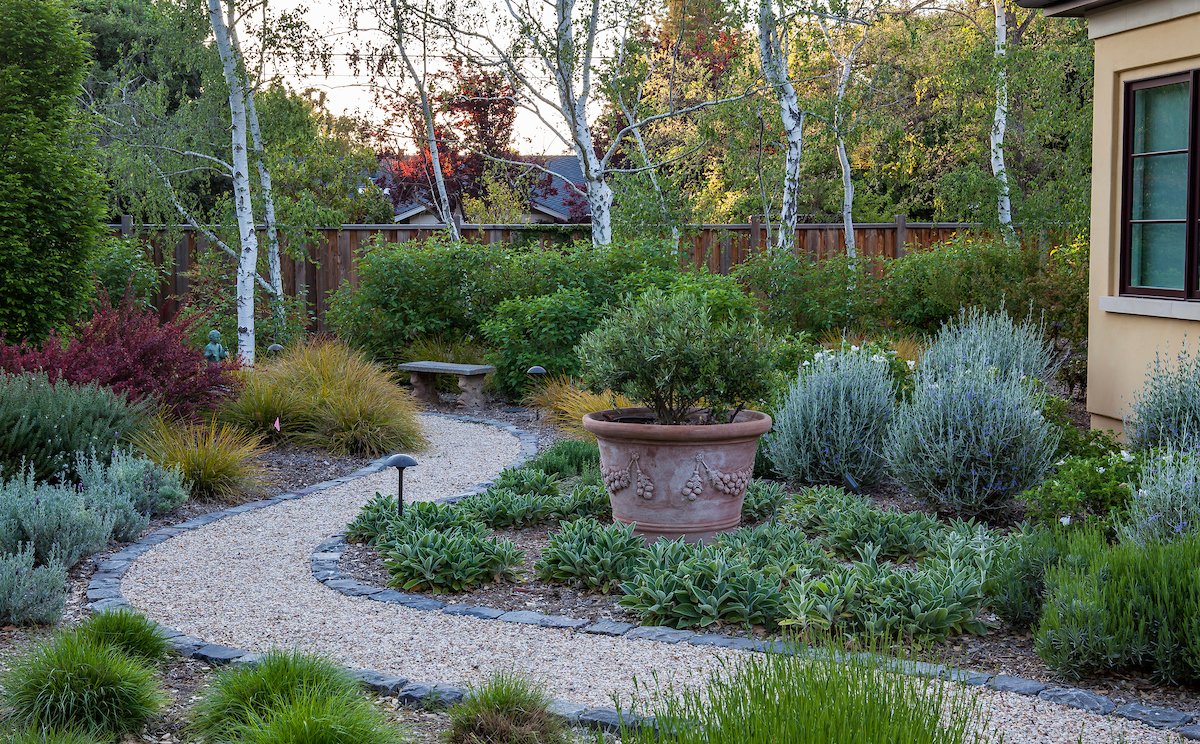The Landscape Architect's Toolkit: Datum
Double-duty datum: this Wisteria-clad pergola stands out in the landscape as both a visual focal point and a physical destination in this Atherton garden.
Just as a master painter uses many different brushes to create their finest work, the best landscape architects draw from a deep knowledge of design principles to craft beautiful outdoor spaces that reflect the homeowner’s personal style and enhance their enjoyment of their property. We’ve written about contrast and rhythm; one other vital element that bears exploration is datum.
The term “datum” in landscape design refers to a singular, distinct element in a landscape that draws the viewer's eye and organizes the space. A datum may be a point, a line, a shape, an object, or even a color; the key is that it is a significant element that influences its surroundings.
Landscape designers commonly use a standalone object such as a tree or a sculpture as a datum. It might be an existing natural feature, such as a rock formation or heritage tree, or a man-made element such as a pergola, fountain, pool, or container planting. These objects draw the viewer’s eye, creating a primary point of interest to which the rest of the landscape is subordinate.
In the schematic design and preliminary design phases of design, the landscape architect might simply identify a generic “focal point” around which other garden elements are organized. As this point is refined and specified in later phases of the process, the surrounding plants and other elements will be chosen to complement it. The datum may also be a destination, such as a pergola, that attracts attention in the landscape.
While it is tempting to think of a datum as a single point, it could also be a line, such as a divider wall or a row of trees at the end of a garden. Again, the important distinction is that the element makes the space. A seatwall at the edge of a patio defines not only the physical boundary of the outdoor room, but also its character: a curved wall signals an informal, organic feel, while a sharply rectilinear form begs a formal, contemporary patio.
The terracotta pot rising above its surroundings is a strong enough datum to cause the path to bend around it in this Atherton garden. Photo by Saxon Holt.
A datum can also be a cohesive grouping of elements that is unique within the landscape. For instance, a “moon garden” usually comprises plants with white flowers or silver foliage that reflect moonlight particularly brightly. Instead of scattering these plants throughout the landscape, they are grouped in a defined area that is given particular significance. Adding a silver gazing ball within this garden would create a focal point that would be more noticeable during the day—a datum within a datum.
Although we have been describing datum as a significant something, a datum can also be nothing—the significant absence of anything. A famous example is the moon gate, a traditional element of Chinese garden architecture, is notable for the datum of its circular opening.
The design principle of datum can be implemented in very simple or very sophisticated ways. The landscape architects who use this concept most successfully use it sparingly, establishing clear primacy for a single important element and designing the surroundings in response to it. This creates order and hierarchy in the landscape, making the space more attractive and inviting.


